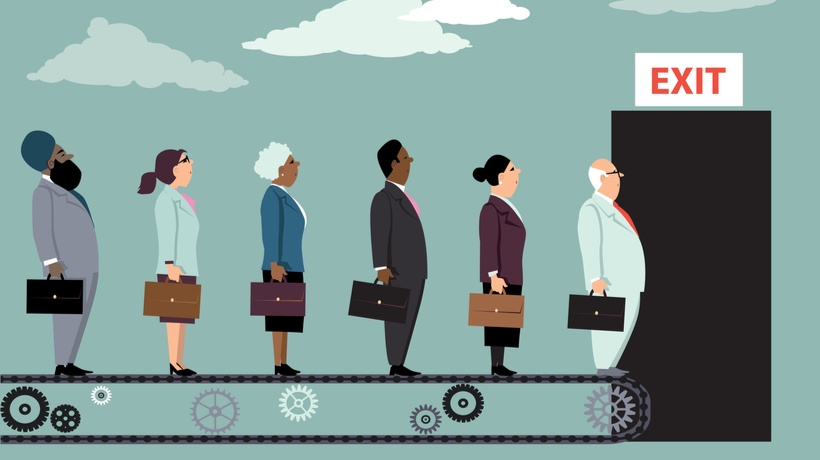Why Quality Adaptive Employee Onboarding Improve Employee Retention
We are in the middle of an incredible shift in the workplace. Currently, roughly half of the workforce is considering quitting their jobs, and “The Great Resignation” is one of the most pressing issues facing employers worldwide. Organizations are scrambling to understand why their people are leaving to determine how to keep them around. However, the solution might be more straightforward (and more powerful) than most leaders think. Improving retention rates starts with adaptive onboarding.

What Is Adaptive Employee Onboarding?
Onboarding is how an organization introduces itself to a new hire. It’s crucial for driving culture and creating an effective workforce. Good onboarding starts early and continues until it flows seamlessly into the rest of a new hire’s training.
The most powerful onboarding is personalized and adaptive. Adaptive learning is a methodology that alters the course content available to individuals related to their performance, experience, and personality. It gets better with each interaction, as it tailors the materials based on how the employee engages with the content.
Adaptive onboarding is a powerful tool that meets employees where they are and when they’re ready. It plays to employees’ strengths and weaknesses efficiently and matches how they expect to consume content. Adaptive employee onboarding drives employee retention because it shows employees that their organization is invested in their future and cares about them as individuals.
3 Reasons Why Adaptive Employee Onboarding Helps You Keep Your Employees Longer
Reason #1: Adaptive Onboarding Plays To Employee Strengths And Weaknesses
Adaptive onboarding drives retention because it creates a personalized experience for employees that build on their strengths while also helping them through their weaknesses. Failure to do so often means employees will become disenfranchised—they’re either bored or overwhelmed by the material in front of them.
Further, each employee is unique. Every person has their own identity, which is valuable to an organization and the individual. Two employees may have the same job, but they’re very different people. Organizations need to tailor their training to foster each person’s unique identity, allowing organizations to make the most of each unique perspective. This personalization helps employees feel that they’re more than simply cogs in a larger machine.
Reason #2: Adaptive Onboarding Is Efficient
In an ideal world, each employee would have a coach who would personally assist them in their onboarding and career development. Onboarding would be personal and effective. However, this isn’t practical, and it’s not efficient. Adaptive learning provides a great alternative. It is personalized and helps organizations maximize their learning resources by using employee interaction with adaptive content data. Adaptive learning can cut onboarding time in half, making new hires productive employees sooner.
The efficiency gained from adaptive onboarding is great for the organization’s bottom line, making organizations more attractive. Employees who can contribute positively to a company’s success quickly feel more valuable, are more engaged, and stay with an organization for longer.
Reason #3: Adaptive Onboarding Meets Employee Expectations
Americans spend, on average, 7.8 hours/day engaging with digital content (that’s more than many of us sleep in a night!). Most of this content is personally tailored to the user’s personality, abilities, and interests. It’s everywhere: Google searches, Netflix lists, music suggestions, and social media feeds. These expectations are set and won’t change when employees walk into their first day on the job. Many new hires arrive and wonder why it’s so much easier for them to get what they need quickly in every area of their lives except at work. It doesn’t need to be this way.
Adaptive onboarding allows organizations to meet the expectations of their employees. It caters to content for each individual and makes it easier for new hires to get what they need when they need it. Work feels like a comfortable extension of the rest of life, which makes employees feel more valued. Ultimately, it results in stronger employee retention numbers.
Conclusion
There are many reasons to implement an adaptive onboarding program in your organization. You can cut training time, increase the efficacy of your training program, and enable new hires to be positive contributors more quickly. However, the benefits don’t stop there. Adaptive onboarding demonstrates that each employee holds value. When organizations use new employees’ time well, and employees feel they directly contribute to the company’s success, they tend to stay.
Download the eBook The Pillars Of Strategic Employee Onboarding for insider secrets to launching a new hire training program that's adaptive, personalized, and perfectly suited for your modern workforce. Also, join the webinar to discover how onboarding drives business success!










